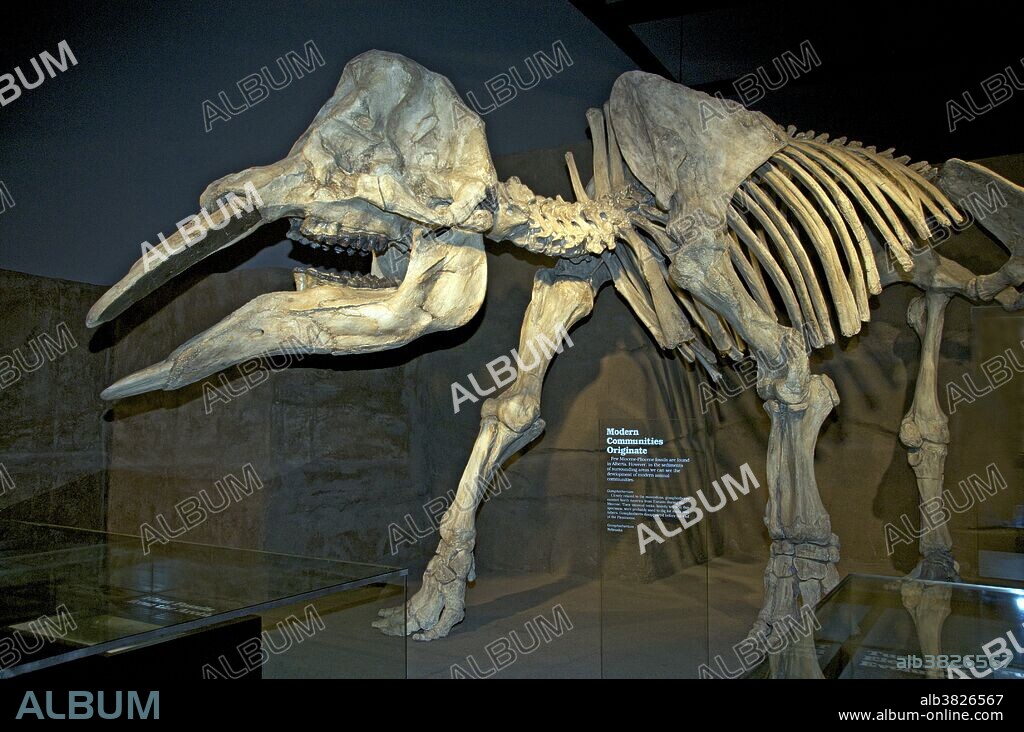alb3826567
GOMPHOTHERIUM

|
Add to another lightbox |
|
Add to another lightbox |



Title:
GOMPHOTHERIUM
Caption:
Gomphotherium, closely related to mastodons, disappeared before the end of the Pleistocene. The 3 m (10 ft) tall creature, also known as Trilophodon or Tetrabelodon, resembled a modern elephant but had four tusks instead of two: two on the upper jaw and two on the elongated lower jaw. The lower ones are parallel and shaped like a shovel and were probably used as such. Unlike modern elephants, the upper tusks were covered by a layer of enamel. These animals probably lived in swamps or near lakes, using their tusks to dig or scrape up aquatic vegetation. This specimen was found in Nebraska. Royal Tyrrell Museum, Alberta, Canada.
Credit:
Album / Science Source / Stephen J. Krasemann
Releases:
Model: No - Property: No
Rights questions?
Rights questions?
Image size:
4304 x 2852 px | 35.1 MB
Print size:
36.4 x 24.1 cm | 14.3 x 9.5 in (300 dpi)
Keywords:
ALBERTA CANADA • CANADIAN MUSEUM • CENOZOIC ERA • EXTINCT ANIMAL • FOSSIL • FOSSILIZED BONES • GOMPHOTHERE • GOMPHOTHERIIDAE • GOMPHOTHERIUM SKELETON • GOMPHOTHERIUM SKULL • GOMPHOTHERIUM • MAMMAL • MAMMALIA • MAMMALIAN • MAMMALS • MIOCENE EPOCH • MOUNTED SPECIMEN • MUSEUM DISPLAY • MUSEUM EXHIBIT • NEBRASKA FOSSIL • NEOZOIC ERA • NORTH AMERICA • PALAEONTOLOGY • PALEONTOLOGY • PREHISTORIC FAUNA • PROBOSCIDEA • ROYAL TYRRELL MUSEUM • SHOVEL-TOOTHED ELEPHANT • SHOVEL-TUSKED MASTODON • TERABELODON • TRILOPHODON
 Pinterest
Pinterest Twitter
Twitter Facebook
Facebook Copy link
Copy link Email
Email

